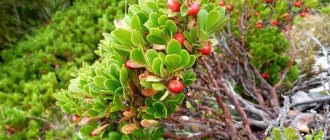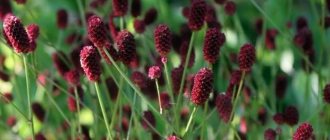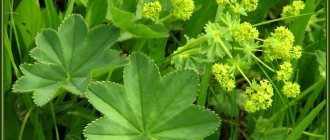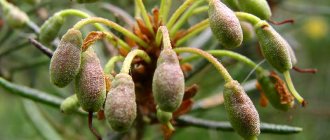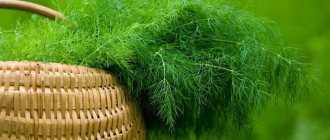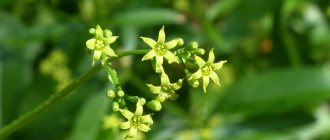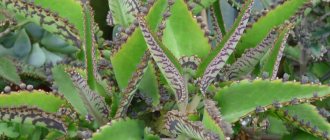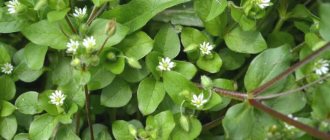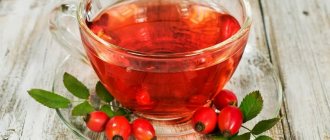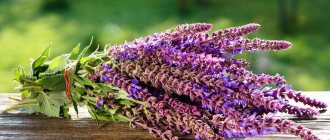Photo: UGC Oregano ordinary many known How oregano. This plant famous their medicinal properties. IN flow many thousand years oregano was used V cooking, giving dishes special aroma. Let's consider more details useful And harmful properties oregano. Find out how Right her apply For treatment body.
Chemical composition of oregano
Oregano herb contains up to 1.2% essential oil of a fairly diverse composition, which is rich in phenols: carvacrol and thymol. They can reach 40%. In addition, the oil contains geranyl acetate, as well as sesquiterpenes (in small quantities). Oregano herb also contains tannins (about 4%). In addition, it contains flavonoids, which include:
- derivatives of luteolin, diosmetin and apigenin,
- phytosterols,
- resinous compounds,
- mustard substances,
- mineral salts.
Oregano - properties
The first mentions of oregano appear in ancient Greek sources, where it is mentioned that diarrhea, rheumatic pain and skin diseases were treated with oregano. And the Romans used oregano leaves to soften the bites of scorpions and spiders. The plant's less medicinal - but certainly no less beneficial - effects were discovered by medieval people who used it as a protection against witchcraft. Today, oregano has been adopted by pharmacists who appreciate its beneficial properties. Studies on the effects of this plant can find conclusions about its antibacterial, diastolic and antioxidant properties.
If the properties of oregano interest you, be sure to check out the properties of basil, a spice that, like oregano, is an integral part of Italian cuisine, as well as a valuable herbal medicine.
Oregano beneficial properties and contraindications
See also: Raspberry tea for colds
How to make seasoning at home
Harvesting of oregano begins during the period of its mass flowering and already from the second year of the growing season. Flowering tops are cut off. According to the rules, they are cut at a height of up to 20 cm from the soil surface.
Then they are tied into bundles and dried in the attic or somewhere under a canopy. The main thing is that the room is well ventilated. If you use modern means - dryers, then the temperature there should be no more than 40 °C.
Natural drying
When drying naturally, in the attic or indoors, it is necessary to hang the raw materials so that they are not exposed to direct sunlight. Plants collected in bunches are hung upside down. If you're worried about raw materials taking up too much space, don't worry. After drying, the finished material will become almost half the size.
When the stems of the plant become dry and brittle, and the leaves fall off easily, even at the slightest touch, then the collected raw materials are ready.
In general, drying takes about a week. The longer the plant dries, the better it dries and the more flavor it retains.
All that remains is to grind the dry parts of the plant, turning them into powder. Moreover, the stems can be left for tea, and the dried flowers and leaves are ground very finely for seasoning.
It is best to separate the flowers from the leaves. The leaves are easy to collect; just run your hand along the stem and they will fall off on their own. You just need to put either a sheet of paper or a container to collect falling leaves. Now they can be ground into powder.
The powder should be stored in glass jars.
If you grow oregano in your garden, you can harvest it up to three times per season. If using fresh leaves, store them in a plastic bag in the refrigerator.
Drying in an electric dryer is good because you don’t have to spend a lot of time waiting for the grass to dry. However, if you do not have such a dryer, you can get by with a regular oven.
Oven drying
Preheat the oven. And then set the fire to the minimum value. Spread the plant evenly on a baking sheet to dry and place it in the oven. Every five minutes you need to check the drying pattern. If the plant is dry, take out a baking sheet and chop the dry leaves onto a sheet of paper. Then pour everything into a storage container.
These simple methods of drying oregano will help you prepare your own seasoning for culinary purposes.
And the video below clearly shows how to prepare oregano seasoning at home.
What effect does oregano have?
Oregano herb stimulates the secretory functions of organs. It enhances the secretion of saliva, gastric juice and bile, improving the processes of assimilation and digestion of food. It also increases the secretion of mucus, especially on the mucous membranes of the upper respiratory tract, and regulates the function of the sweat glands and kidneys, gently increasing the amount of urine produced. Due to the content of flavonoids, this plant has a diastolic effect on:
- smooth muscles of the bronchi,
- intestinal smooth muscles,
- bile ducts,
- ureters,
- uterus during monthly bleeding.
The presence of tannins and phenols makes oregano:
- has antidiarrheal properties,
- has antibacterial properties,
- binds harmful metabolic products.
Oregano - uses
The upper, leafy parts of the flowering stems of Oregano are used for medicinal purposes. They are dried naturally in a dark, dry place or in a food dryer at temperatures up to 35⁰C. Oregano herb, used for medicine, is harvested from June to September.
The herb is used for various diseases, most often as a mild diuretic. It is also used:
- with liver and biliary insufficiency,
- with gastritis,
- for dyspepsia and intestinal atony,
- when excessive fermentation (gas formation) occurs in the body,
- from flatulence.
Oregano is also used to treat upper respiratory tract infections, coughs and difficulty breathing.
See also: Cranberry juice for colds
As for external use, you can use the herb:
- for preparing rinses for the treatment of stomatitis and pharyngitis,
- as an additive to baths used for itchy skin and the treatment of difficult-to-heal wounds, as well as for washing patients in bed.
It is interesting to note that in folk medicine, oregano was considered an effective sedative in the treatment of certain mental disorders - hysteria and erotomania.
Oregano
Botanical description
The height of oregano is from 30 to 60 cm. The rhizome is oblique, creeping.
The stems are branched, tetrahedral, with slight pubescence. Over time, mature stems become woody at the base.
Oregano leaves are opposite, petiolate, oblong, pointed. They have a soft, fuzzy structure. Located along the entire length of the tender stems, decreasing in size towards the apex.
The flowers form dense, numerous shields. Corolla pale purple.
The fruit consists of four nuts.
Oregano oil - application
It is worth mentioning oregano oil, which, thanks to its carvacrol content:
- kills bacteria, viruses and fungi,
- strengthens the immune system during transition periods when the likelihood of catching a cold, flu or sinusitis increases,
- has anti-inflammatory, analgesic and hepatoprotective (protects the liver) properties.
According to some scientists, in terms of the content of biologically active antioxidants, oregano is a better source of antioxidants than berries or cereals. Antioxidants in the oil eliminate excess free radicals. The phenols contained in oregano kill bacteria and viruses by destroying their membranes and cell walls, while human cells are not destroyed.
Oregano oil comes in several forms. They differ in the active substance, which can be:
- carvacrol,
- sabinen,
- linalool,
- p-tsimen,
- thymol.
Due to different physicochemical parameters, they exhibit different properties.
Oregano oil - properties
The beneficial properties of oregano are believed to be due to phenolic compounds such as carvacrol and thymol, which are also found in thyme. Research shows that these ingredients kill bacteria by weakening the integrity of their membranes and cell walls. This property is useful in the treatment of bacterial dysbiosis - an imbalance of bacterial flora in the intestines. It can occur with bloating, irritable bowel syndrome and other gastrointestinal diseases. Using oregano oil may be a way to eliminate pathogenic batteries. What's particularly important is that the drug is unlikely to have a negative effect on levels of good bacteria. The best results are achieved with simultaneous probiotic therapy.
See also: Treatment of seizures with folk remedies
Practice of use also shows that the herb has a beneficial effect on the secretion of saliva, gastric juice and bile. This improves the processes of digestion and absorption of food. It can also be used for indigestion, diarrhea and gastritis. In addition, oregano contains essential oils with a diastolic effect. As a result, the plant can help with smooth muscle spasms often found in the digestive system.
Oregano combines antibacterial, antifungal and decongestant properties. In addition, it is able to support the secretion of mucus from the mucous membrane of the upper respiratory tract. The combination of these qualities makes the herb very useful for infections of the lungs and sinuses, as well as diseases such as upper respiratory tract catarrh and expectoration problems.
This is because it is now believed that most chronic sinus problems are caused by fungal activity, often accompanied by bacterial complications.
A study conducted by the US Department of Agriculture found that oregano has very strong antioxidant properties.
According to this study, oregano has 42 times the antioxidant power of apples and 4 times more than berries.
Diabetes
A 2015 study found that oregano extract improved type 1 diabetes in mice, presumably due to the plant's antioxidant properties, its ability to prevent cell death in the body, and its positive effect on immunity.
The medicinal composition of oregano may be useful in cases of type 2 diabetes .
A 2021 study showed that taking the leaves and oil helps restore damaged liver and kidney cells, has a positive effect on genes that are responsible for fat and carbohydrate metabolism, as well as insulin resistance.
Oregano oil for treating ringworm
Other studies confirm the high effectiveness of oregano as an antifungal agent. Oregano oil is especially helpful in this context.
Oregano (oil) is especially dangerous for Candida albicans, a bacteria that naturally lives in the large intestine. Too much of this fungus and its spread to other parts of the body causes various diseases. These include eczema (inflammatory lesions on the skin) and infections of the mouth and throat. How to use oregano oil for ringworm? You can add it to your skin care products and apply a small amount of oregano oil directly to the affected areas 1-2 times a day.
Oregano has also been noted to have significant effects against Helicobacter pyroli, a bacterium that is a leading cause of stomach and duodenal ulcers. This is one of the few natural remedies that can fight this bacterium, and its effectiveness has been confirmed by research. Oregano can be drunk as tea, but oil is also great. Oregano oil can be used for the digestive system, especially as an additive to tea (1-2 drops per cup).
See also: Cranberry juice for colds
Pharmaceutical preparations with oregano
- Urolesan. A multicomponent preparation that includes oregano herb extract. Prescribed for pyelonephritis, dyskinesias of the gallbladder and biliary tract, liver diseases, stones and sand in the kidneys and biliary tract.
- Oil of oregano. An aromatic oil effective for neurasthenia, arthritis, back pain, muscle pain, colds, bronchitis, sore throat, rhinitis, fungal diseases, boils and other inflammatory processes of the skin. The oil is added to creams, used for inhalations, baths (steam and sitz), lotions and compresses are made based on it, and lubricates inflamed areas and skin. Very effective in the first days of illness.
- Oregano herb. Dry raw materials for the preparation of dosage forms. It belongs to expectorants of plant origin for diseases of the respiratory system, and is also prescribed for secretory insufficiency of the gastrointestinal tract, enterocolitis, and intestinal atony. Externally used in the form of lotions and baths for diathesis and pustular skin diseases.
The herb is included in various herbal preparations.
Oregano oil - application
It is impossible to deny the beneficial effects of using oregano as - mentioned at the beginning of the text - a seasoning for many dishes. However, the richest source of beneficial components contained in the oregano herb is wild oregano oil. An additional advantage of such a drug will be mixing oregano oil with olive oil, which is an effective protection against possible irritation of the mucous membranes.
The properties of oregano oil can be described as follows:
- Antimicrobial,
- Antifungal,
- Antimicrobial,
- Promotes digestion
- Antiparasitic,
- Helpful for irregular and/or painful periods,
- Antioxidant,
- Anti-aging,
- Supporting immunity
- Anti-inflammatory.
Interesting Facts
- To the ancient Greeks, the spicy aroma of oregano seemed so divine that they considered the plant to be the creation of Aphrodite herself.
- In Germany, oregano is called “sausage grass” because the spice is used in the preparation of the famous German sausages.
- From Greek, “oregano” is translated as “the joy of the mountains” or “mountain decoration.”
- Oregano is one of the best remedies for moths.
Oregano is not just a herb used to add special flavor to foods. This is a real treasure trove of health benefits. Using the seasoning in the preparation of everyday and holiday dishes, you can enjoy its unique aroma and get rid of many diseases.
Oregano - what to add it to?
As a spice, oregano goes well with Italian dishes and is also ideal for difficult-to-digest dishes. For colds and flu, oregano oil is best used as an inhalation or as an additive to tea. Likewise, in the form of drops of oregano oil added to infusions, it can be used for digestive problems. Oregano oil can be applied topically, directly to the affected area, to treat acne and skin problems, including ringworm. But be careful, it can cause a burning sensation, so it is best, especially at the beginning of use, to dilute it with water or other oils of a more neutral nature (for example, olive oil, coconut oil).
Oregano
What can you replace the seasoning with?
As always, the question arises: what to replace this or that component with if it is not at hand. Despite the high taste. Oregano is completely replaceable with herbs such as marjoram, basil, thyme and sage. You will definitely have some of these herbs.
Green basil
A very popular substitute for oregano. Basil is quite suitable for making tomato-based pasta sauces.
Thyme
Just like basil, it is popular with most chefs. Good for tomato soups with potatoes and beans. It is also used in the preparation of sauces for salads.
Marjoram
Marjoram looks very much like oregano, so sometimes they can be confused. However, marjoram has a milder and more floral aroma than oregano. Therefore, these two plants are interchangeable. Sometimes they are placed together. Marjoram is the best substitute for oregano. When replacing, it is recommended, based on the recipe, to take three parts of marjoram for every two parts of oregano.
Sage
This substitute is not as traditional as the previous ones. However, it can also be used if there is nothing else at hand. It is recommended to use only fresh leaves of sage, as they contain all the beneficial substances that can replace oregano in taste.
This is such a wonderful herb, this oregano or oregano. If you haven't tried it yet, be sure to give it a try.
Good luck!
Oregano oil - dosage
Depending on the purpose, the dosage of oregano oil may vary. When it comes to using oregano oil for sinuses in the form of inhalation, it is recommended to add 20-30 drops of oil to a diffuser/inhaler. When using oregano oil in food, it is best to add a few drops per tablespoon of oil. The number of drops recommended for use varies depending on the concentration of oil in the preparation. It is worth paying attention to the manufacturer's recommendations. We usually use oregano oil 2-3 times a day.
Oregano oil - contraindications
Oregano oil may cause allergic reactions and irritation of the digestive system and should not be used by people with digestive problems. The oil acts as an antibiotic and is best used in conjunction with probiotics. To avoid adverse reactions, it is best to consult a medical professional before using oregano preparations.
Collection and preparation
The ideal time to collect oregano is when flower buds are forming. It is at this time, before the flowers bloom, that the amount of nutrients in it reaches its peak. You need to collect it in the morning, after the dew has disappeared. Cut off the tender branches with scissors, or run your fingers along the stem - the leaves will appear in your palm.
Oregano root is not used for medicinal purposes. You need to dry it in the shade or in a ventilated area, hanging the oregano in the form of small bouquets.
Do it yourself - oregano as a remedy for ailments
Herbal infusion
Pour 2 tablespoons of oregano herb into 2 cups of boiling water and leave to steep, covered, for about 15 minutes, then leave to cool for 10 minutes and strain. Drink ½ glass 2-3 times a day:
- 30 minutes before meals as a gastric and diastolic remedy,
- After meals as a decongestant and expectorant.
You can also use the chilled infusion to rinse your mouth and throat.
Herbs for bathing and body washing
Mix 2 handfuls of oregano herb, knotweed herb and dandelion herb. Pour in 3 liters of cold water. Heat to a boil, then simmer, covered, over low heat for 5-10 minutes. Strain the entire mixture. This mixture can be used as a bath additive or for washing the body of seriously ill (bedridden) people, as it has an effect that to some extent prevents the formation of bedsores.
Oregano has many uses. It can be used both as a spice and as a plant with health benefits. Oregano oil and dried oregano herb are used medicinally.
Headache
Recipe 1:
- Brew a glass of boiling water 1 tbsp. dried herbs, boil for 2-3 minutes, let cool until warm.
Wash your hair, moisturizing the skin and hair roots as much as possible. Wrap your head in a scarf for half an hour.
Recipe 2:
- Brew a glass of boiling water 2 tsp. herbs, leave for half an hour, strain.
Take 1/2 cup in small sips 15 minutes before breakfast and dinner. In case of severe pain, apply the remaining cake to the forehead.
